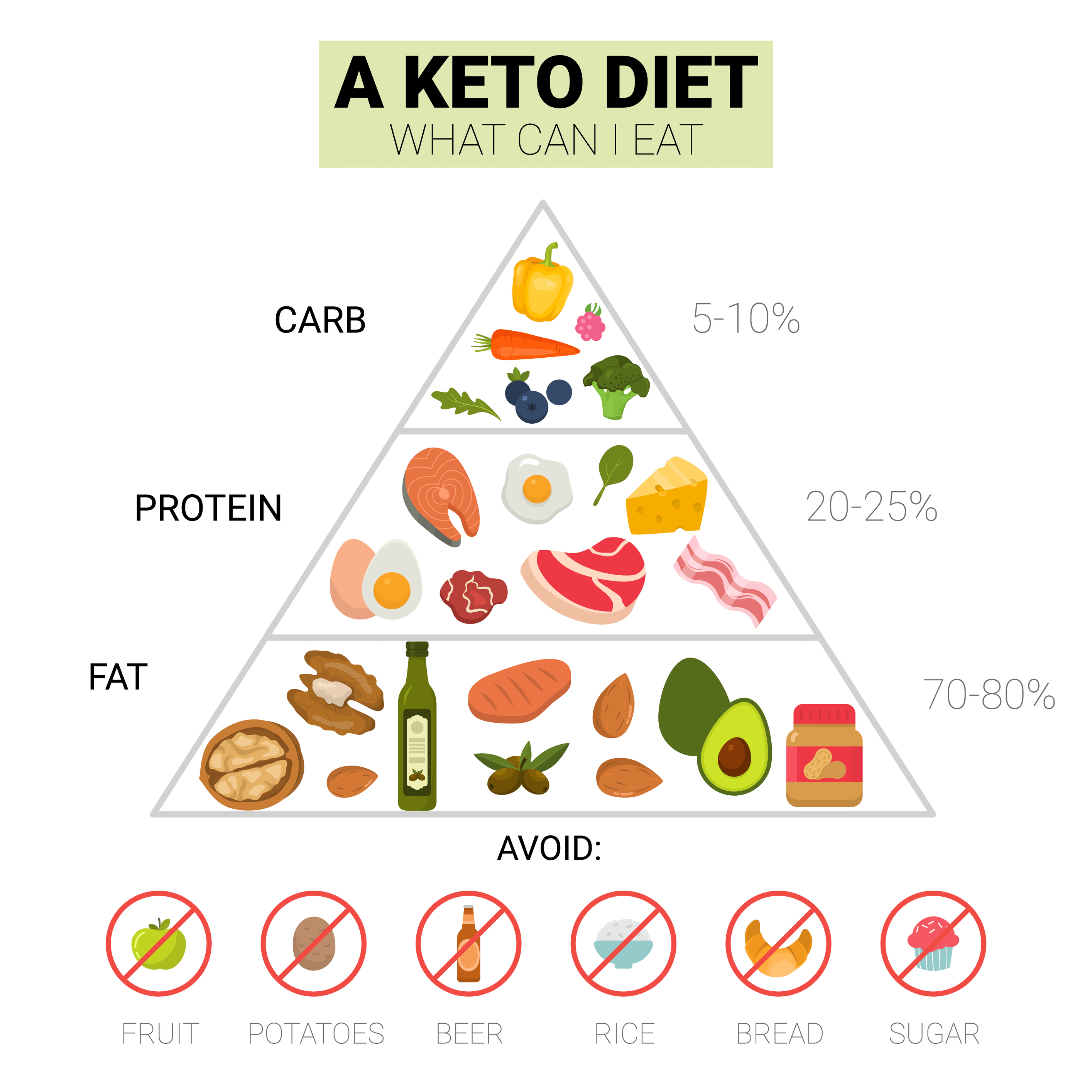This article is written for people who are ready to start following the keto diet but aren’t quite sure how to make a keto meal plan. Whether you want to control your weight or gain muscle while following a keto diet, read on to learn the easy steps to calculate how many macros and calories you have to plan for.
Calculating the number of macronutrients for a keto diet
 The first few pieces of information you’ll need to make a keto meal plan are:
The first few pieces of information you’ll need to make a keto meal plan are:
-
- Your height, weight, and age
- What is your level of physical activity
- Your body composition goals
This information is used to calculate your Basal Metabolic Rate (BMR) as well as your Total Energy Expenditure (TEE).
BMR is the calculation to find the number of calories you need just to exist with no regard to your activity level (i.e., how calories would you need if you never left your bed?).
TEE is your personal BMR plus daily living activity plus the energy used for exercising.
How many calories will you need to consume on the keto diet?
The most accurate way to find your BMR is to use an indirect calorimeter which is not cheap! The next best thing is to use the Mifflin St. Jeor equations calculator.
-
- Men’s Equation: 10 x your weight in kilograms + your height in centimeters x 6.25 – 5 x your age in years + 5
- Women’s Equation: 10 x your weight in kilograms + your height in centimeters x 6.25 – 5 x your age in years – 161
Once you have your BMR calculated, you can find your TEE by multiplying your BMR by one of the following activity factors:
| With little or no exercise | TEE = BMR x 1.2 |
| Exercising one to three days a week | TEE = BMR x 1.375 |
| Exercising three to five days a week | TEE = BMR x 1.55 |
| Exercising 6 or 7 days a week | TEE = BMR x 1.725 |
| Exercising twice/day or extra heavy workouts | TEE = BMR x 1.9 |
If you’re not keen on math you can use this online BMR calculator.
After deriving your TEE you need to calculate your macronutrients (fat, protein, and carbohydrates) as a percentage of your total caloric intake.
If you want to lose weight, reduce your daily intake by 500 calories to lose about one pound per week. To gain weight, add 500 calories per day. To maintain your weight and reap the other benefits of a keto diet, hold your caloric intake to your TEE.
As an example, if a ketoer’s TEE is 2000 cal/day and they want to lose weight, they would reduce their consumption by 500 cal/day and only eat 1500 calories worth of food per day. The next thing to do is figure out how many calories are needed from fats, proteins, and carbs.
The standard keto diet is 80% of the calories come from fat, 15% from protein and just 5% from carbs.
How many grams of fat, protein, and carbs you will need
These calculations are based on a 1500 cal/day diet.
Fat:
Fat makes up 80% of your calories, so 1500 X 0.8 = 1200 cal/day from fat.
There are nine calories/g of fat. Therefore we divide 1200 cal/day by 9 to get 133.33 grams of fat.
Protein:
Fifteen percent of your calories is to come from protein. So we do the math, 1500 x .15 = 225 cal/day from proteins.
Protein contains 4 cal/g. Dividing 225 cal/day by 4 gives us 56.25g of protein per day.
Carbs:
This is easy. Take the total daily calories minus the calories from fat and protein will give the carb calories.
So, 1500 cal/day – 1200 cal/day from fat – 225 cal/day from protein = 75 cal/day from carbs.
And we know carbs have 4 cal/g so we divide 75 cal/day by 4 and get 18.75 g/day of carbohydrates.
So that’s 133.33g of protein, 56.25g of protein, and 18.75g of carbs per day when modified TEE = 1500 cal/day.
Easy peasy, right?
Now you know how to make a keto meal plan that ensures you’re getting the right quantities of fat, protein, and carbs in your keto diet.
A much easier way to go is to have a custom keto diet plan prepared for you based on your height, weight, age, level of physical activity, and personal weight goals. Click the banner below to learn more about your customized keto diet plan, or click here to go straight to your custom keto diet meal planner.

